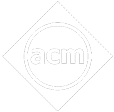- Written by nikhil
- Last Modified on 17-02-2023
Cambridge AS and A Level 2023
The University of Cambridge has provided standardised educational assessment services worldwide since 1863. The University of Cambridge International Examinations (CIE) is the leading provider of international qualifications for young people aged 14 to 19. Thousands of candidates take the Cambridge examinations in over 150 countries annually to help students obtain admission to top colleges worldwide.
The curriculum fosters in-depth knowledge of subjects as well as critical thinking abilities. Cambridge students are widely accepted at leading study destinations such as the United States, the United Kingdom, Australia, and many other countries. Cambridge International AS and A Level expands students’ knowledge, understanding, and skills.
Cambridge AS and A Level 2023: Exam Summary
The AS/A Levels are a highly specialised programme in which students typically study four topics; however, outstanding students may take up to five. This programme allows students to build in-depth knowledge, understanding, excellent reasoning abilities, and critical thinking skills. Because of these factors, colleges worldwide, including India’s top universities, have recognised and accepted the programme.
The A Level syllabus’ subject content has been divided into two parts: the AS syllabus content, which is covered in the first half of the course (Grade 11), and the A2 syllabus content, which is covered in Grade 12.
This adaptable method enables students to complete their staged assessments by taking the AS certificate in one session (at the end of Grade 11) and the A2 qualification in a subsequent session (at the end of Grade 12).
Cambridge AS and A Level: Brochure
The brochure link for Cambridge AS and A Level is given below: Students can refer to the brochure for exam and curriculum information.
https://www.cambridgeinternational.org/Images/122973-cambridge-advanced-brochure.pdf
Official Website Link
https://www.cambridgeinternational.org/
Latest Update:
Click here for details of the June 2022 and November 2022 exam series.
Number of Seats
Cambridge AS and A Level: Exam Pattern
Exam pattern details - Total time
Assessment options Learners can obtain Cambridge International AS and A Level qualifications through a variety of assessment techniques. Learners can obtain Cambridge International AS and A Level qualifications through a variety of assessment techniques, including:
- One can take the Cambridge International AS Level only as 50% of the Cambridge International A Level syllabus is covered.
- Take a ‘staged’ assessment approach, completing the Cambridge International AS Level in one series and the final Cambridge International A Level in another. Within 13 months, AS Level marks can be carried forward to a full A Level twice. *
- Take all of the Cambridge International A Level course’s papers simultaneously, generally near the end of the course.
- Each year, the Cambridge International AS & A Level test series is conducted in June and November. The results are released twice a year, in August and January.
- Only take the Cambridge International AS Level after a one-year or two-year programme. The Cambridge International AS level syllabus contains half of the Cambridge International A level content.
Note– In some subjects, the staged assessment method is not feasible. The results of the Cambridge International AS Level language syllabuses cannot be forwarded to the Cambridge International A Level language syllabuses.
Cambridge AS and A Level Maths Exam Pattern
The Maths exam pattern for Cambridge AS and A level is as follows:
| Paper |
Mathematics Exam Pattern |
| Paper 1 (Pure Mathematics 1) |
Duration: 1 hour 50 minutes
Marks: 75 marks
Questions based on Pure Mathematics 1
Assessed Externally
60% of the AS Level
30% of the A Level
Compulsory for AS Level and A Level |
| Paper 2 (Pure Mathematics 2) |
Duration: 1 hour 15 minutes
Marks: 50 marks
Questions based on Pure Mathematics 2
Assessed Externally
40% of the AS Level
Offered only as part of AS Level |
| Paper 3 (Pure Mathematics 3) |
Duration: 1 hour 50 minutes
Marks: 75 marks
Questions based on Pure Mathematics 3
Assessed Externally
30% of the A Level only
Compulsory for A Level |
| Paper 4 (Mechanics) |
Duration: 1 hour 15 minutes
Marks: 50 marks
Questions based on Mechanics
Assessed Externally
40% of the AS Level
20% of the A Level
Offered as part of AS Level or A Level |
| Paper 5 (Probability & Statistics 1) |
Duration: 1 hour 15 minutes
Marks: 50 marks
Questions based on Probability & Statistics 1
Assessed Externally
40% of the AS Level
20% of the A Level
Compulsory for A Level |
| Paper 6 (Probability & Statistics 2) |
Duration: 1 hour 15 minutes
Marks: 50 marks
Questions based on Probability & Statistics 2
Assessed Externally
20% of the A Level only
Offered only as part of A Level |
Cambridge AS and A Level Science Exam Pattern
The Science exam pattern for Cambridge AS and A Level are as follows:
| Paper |
Science Exam Pattern |
| Paper 1 (Multiple Choice) |
Duration: 1 hour 15 minutes
Marks: 40 marks
40 multiple-choice questions
Questions based on AS Level syllabus
Assessed Externally
31% of the AS Level
15.5% of the A Level |
| Paper 2 (AS Level Structured Questions) |
Duration: 1 hour 15 minutes
Marks: 60 marks
Questions based on AS Level syllabus
Assessed Externally
46% of the AS Level
23% of the A Level |
| Paper 3 (Advanced Practical Skills) |
Duration: 2 hours
Marks: 40 marks
Questions based on practical skills
Assessed Externally
23% of the AS Level
11.5% of the A Level |
| Paper 4 (A Level Structured Questions) |
Duration: 2 hours
Marks: 100 marks
Questions based on A Level syllabus
Assessed Externally
38.5% of the A Level |
| Paper 5 (Planning, Analysis and Evaluation) |
Duration: 1 hour 15 minutes
Marks: 30 marks
Questions based on practical skills of planning, analysis and evaluation.
Assessed Externally
11.5% of the A Level |
Cambridge AS and A Level Exam Syllabus
Cambridge offers a choice of more than 55 subjects, which can be offered in almost any combination by schools. Because of this flexibility, schools can create an individualised curriculum, and students can choose to specialise in a specific subject area or study various subjects.
A list of subjects offered by Cambridge is as follows:
Cambridge International A Level is a two-year course, and Cambridge International AS Level is a one-year course. Some subjects may begin as a Cambridge International AS Level and progress to a Cambridge International A Level. The subjects provided are as follows-
Mathematics-9709 Syllabus 2022
| Mathematics-9709 Syllabus |
| Content section |
Assessment component |
Topics included |
| Pure Mathematics 1 |
Paper 1 |
1.1 Quadratics
1.2 Functions
1.3 Coordinate geometry
1.4 Circular measure
1.5 Trigonometry
1.6 Series
1.7 Differentiation
1.8 Integration |
| Pure Mathematics 2 |
Paper 2 |
2.1 Algebra
2.2 Logarithmic and exponential functions
2.3 Trigonometry
2.4 Differentiation
2.5 Integration
2.6 Numerical solution of equations |
| Pure Mathematics 3 |
Paper 3 |
3.1 Algebra 3.2 Logarithmic and exponential functions 3.3 Trigonometry 3.4 Differentiation 3.5 Integration 3.6 Numerical solution of equations 3.7 Vectors 3.8 Differential equations 3.9 Complex numbers |
| Mechanics |
Paper 4 |
4.1 Forces and equilibrium
4.2 Kinematics of motion in a straight line
4.3 Momentum
4.4 Newton’s laws of motion
4.5 Energy, work and power |
| Probability & Statistics 1 |
Paper 5 |
5.1 Representation of data
5.2 Permutations and combinations
5.3 Probability
5.4 Discrete random variables
5.5 The normal distribution |
| Probability & Statistics 2 |
Paper 6 |
6.1 The Poisson distribution
6.2 Linear combinations of random variables
6.3 Continuous random variables
6.4 Sampling and estimation
6.5 Hypothesis tests |
There are six components that can be combined in specific ways which are as follows:
Paper 1: Pure Mathematics 1 Paper 4: Mechanics
Paper 2: Pure Mathematics 2 Paper 5: Probability & Statistics 1
Paper 3: Pure Mathematics 3 Paper 6: Probability & Statistics 2
All AS Level candidates take two written papers.All A Level candidates take four written papers.
AS Level Mathematics
The Cambridge International AS Level Mathematics qualification offers three different options:
- Pure Mathematics only (Paper 1 and Paper 2) or
- Pure Mathematics and Mechanics (Paper 1 and Paper 4) or
- Pure Mathematics and Probability & Statistics (Paper 1 and Paper 5).
A Level Mathematics
The Cambridge International A Level Mathematics qualification offers two different options:
Pure Mathematics, Mechanics and Probability & Statistics (Papers 1, 3, 4 and 5) or
Pure Mathematics and Probability & Statistics (Papers 1, 3, 5 and 6).
The detailed syllabus can be viewed from Mathematics-9709 Syllabus 2022
Biology-9700 Syllabus 2022
| Biology 9700 Syllabus |
| Candidates for Cambridge International AS Level Biology study the following topics: |
| |
Cell structure |
| |
Biological molecules |
| |
Enzymes |
| |
Cell membranes and transport |
| |
The mitotic cell cycle |
| |
Nucleic acids and protein synthesis |
| |
Transport in plants |
| |
Transport in mammal |
| |
Gas exchange |
| |
Infectious diseases |
| |
Immunity |
| Candidates for Cambridge International A Level Biology study the AS topics and the following topics: |
| |
Energy and respiration |
| |
Photosynthesis |
| |
Homeostasis |
| |
Control and coordination |
| |
Inheritance |
| |
Selection and evolution |
| |
Classification, biodiversity and conservation |
| |
Genetic technology |
The detailed syllabus can be viewed from Biology 9700 Syllabus 2022
Chemistry 9701 Syllabus 2022
| AS Level subject content |
A Level subject content |
| Candidates for Cambridge International AS Level Chemistry study the following topics: |
Candidates for Cambridge International A Level Chemistry study the AS topics and the following topics: |
| S. No. |
Physical Chemistry |
S. No. |
Physical Chemistry |
| |
Atomic structure and stoichiometry |
23. |
Chemical energetics |
| |
Atoms, molecules and stoichiometry |
24. |
Electrochemistry |
| |
Chemical bonding |
25. |
Equilibria |
| |
States of matter |
26. |
Reaction kinetics |
| |
Chemical energetics |
|
|
| |
Electrochemistry |
|
|
| |
Equilibria |
|
|
| |
Reaction kinetics |
|
|
| |
Inorganic chemistry |
|
Inorganic chemistry |
| |
The Periodic Table: chemical periodicity |
27. |
Group 2 |
| |
Group 2 |
28. |
Chemistry of transition elements |
| |
Group 17 |
|
|
| |
Nitrogen and sulfur |
|
|
| |
Organic chemistry |
|
Organic chemistry |
| |
An introduction to AS Level organic chemistry |
29. |
An introduction to A Level organic chemistry |
| |
Hydrocarbons |
30. |
Hydrocarbons |
| |
Halogen compounds |
31. |
Halogen compounds |
| |
Hydroxy compounds |
32. |
Hydroxy compounds |
| |
Carbonyl compounds |
33. |
Carboxylic acids and derivatives |
| |
Carboxylic acids and derivatives |
34. |
Nitrogen compounds |
| |
Nitrogen compounds |
35. |
Polymerisation |
| |
Polymerisation |
36. |
Organic synthesis |
| |
Organic synthesis |
|
|
| |
Analysis |
|
Analysis |
| |
Analytical techniques |
37. |
Analytical techniques |
The detailed syllabus can be viewed from Chemistry 9701 Syllabus 2022
Physics 9702 Syllabus 2022
| Physics 9702 |
| Candidates for Cambridge International AS Level Physics study the following topics: |
| |
Physical quantities and units |
| |
Kinematics |
| |
Dynamics |
| |
Forces, density and pressure |
| |
Work, energy and power |
| |
Deformation of solids |
| |
Waves |
| |
Superposition |
| |
Electricity |
| |
D.C. circuits |
| |
Particle physics |
| Candidates for Cambridge International A Level Physics study the AS Level topics and the following topics: |
| |
Motion in a circle |
| |
Gravitational fields |
| |
Temperature |
| |
Ideal gases |
| |
Thermodynamics |
| |
Oscillations |
| |
Electric fields |
| |
Capacitance |
| |
Magnetic fields |
| |
Alternating currents |
| |
Quantum physics |
| |
Nuclear physics |
| |
Medical physics |
| |
Astronomy and cosmology |
The detailed syllabus can be viewed from Physics 9702 Syllabus 2022
Cambridge AS and A Level Exam Blueprint
Mathematics 9709
Assessment objectives as an approximate percentage of each component
| Mathematic-9709 |
| Assessment objective |
Weighting in components % |
| |
Paper 1 |
Paper 2 |
Paper 3 |
Paper 4 |
Paper 5 |
Paper 6 |
| AO1 Knowledge and understanding |
55 |
55 |
45 |
55 |
55 |
55 |
| AO2 Application and communication |
45 |
45 |
55 |
45 |
45 |
45 |
Assessment objectives as an approximate percentage of each qualification
| Assessment objective |
Weighting in AS Level % |
Weighting in A Level % |
| AO1 Knowledge and understanding |
55 |
52 |
| AO2 Application and communication |
45 |
48 |
Biology 9700
Assessment objectives as a percentage of each qualification
| Assessment objective |
Weighting in AS Level % |
Weighting in A Level % |
| AO1 Knowledge and understanding |
40 |
40 |
| AO2 Handling, applying and evaluating information |
40 |
40 |
| AO3 Experimental skills and investigations |
20 |
20 |
| Total |
100 |
100 |
Assessment objectives as a percentage of each component
| Assessment objective |
Weighting in components % |
| |
Paper 1 |
Paper 2 |
Paper 3 |
Paper 4 |
Paper 5 |
| AO1 Knowledge and understanding |
50 |
50 |
0 |
50 |
0 |
| AO2 Handling, applying and evaluating information |
50 |
50 |
0 |
50 |
0 |
| AO3 Experimental skills and investigations |
0 |
0 |
100 |
0 |
100 |
| Total |
100 |
100 |
100 |
100 |
100 |
Mark allocations for Paper 3
| Skill |
Breakdown of skills |
Total marks |
| Manipulation, measurement and observation |
Decisions relating to measurements and observations |
15-17 |
| Collection of data and observations |
| Presentation of data and observations |
Recording data and observations |
11-13 |
| Display of calculation and reasoning |
| Layout of data and observations |
| Analysis, conclusions and evaluation |
Interpreting data and observations |
11-13 |
| Drawing conclusions |
| Identifying sources of error and suggesting improvements |
Mark allocations for Paper 5
| Skill |
Breakdown of skills |
Total marks |
| Planning |
Defining the problem |
14-16 |
| Methods |
| Analysis, conclusions and evaluation |
Dealing with data |
14-16 |
| Conclusions |
| Evaluation |
Chemistry 9701
Assessment objectives as a percentage of each qualification
| Assessment objective |
Weighting in AS Level % |
Weighting in A Level % |
| AO1 Knowledge and understanding |
40 |
40 |
| AO2 Handling, applying and evaluating information |
40 |
40 |
| AO3 Experimental skills and investigations |
20 |
20 |
| Total |
100 |
100 |
Assessment objectives as a percentage of each component
| Assessment objective |
Weighting in components % |
| |
Paper 1 |
Paper 2 |
Paper 3 |
Paper 4 |
Paper 5 |
| AO1 Knowledge and understanding |
50 |
50 |
0 |
50 |
0 |
| AO2 Handling, applying and evaluating information |
50 |
50 |
0 |
50 |
0 |
| AO3 Experimental skills and investigations |
0 |
0 |
100 |
0 |
100 |
| Total |
100 |
100 |
100 |
100 |
100 |
Mark allocations for Paper 3
| Skill |
Breakdown of skills |
Total marks |
| Manipulation, measurement and observation |
Successful collection of data and observations |
12 marks |
| Quality of measurements or observations |
| Decisions relating to measurements or observations |
| Presentation of data and observations |
Recording data and observations |
6 marks |
| Display of calculation and reasoning |
| Layout of data and observations |
| Analysis, conclusions and evaluation |
Interpreting data and observations |
10 marks |
| Drawing conclusions |
| Identifying sources of error and suggesting improvements |
Note– The remaining 12 marks will be allocated across the skills in this grid and their allocation may vary from paper to paper.
Mark allocations for Paper 5
| Skill |
Breakdown of skills |
Total marks |
| Planning |
Defining the problem |
12 marks |
| Methods |
| Analysis, conclusions and evaluation |
Dealing with data |
12 marks |
| Conclusions |
| Evaluation |
Note– The remaining 6 marks will be allocated across the skills in this grid and their allocation may vary from paper to paper.
Physics 9702
Assessment objectives as a percentage of each qualification
| Assessment objective |
Weighting in AS Level % |
Weighting in A Level % |
| AO1 Knowledge and understanding |
40 |
40 |
| AO2 Handling, applying and evaluating information |
40 |
40 |
| AO3 Experimental skills and investigations |
20 |
20 |
| Total |
100 |
100 |
Assessment objectives as a percentage of each component
| Assessment objective |
Weighting in components % |
| |
Paper 1 |
Paper 2 |
Paper 3 |
Paper 4 |
Paper 5 |
| AO1 Knowledge and understanding |
50 |
50 |
0 |
50 |
0 |
| AO2 Handling, applying and evaluating information |
50 |
50 |
0 |
50 |
0 |
| AO3 Experimental skills and investigations |
0 |
0 |
100 |
0 |
100 |
| Total |
100 |
100 |
100 |
100 |
100 |
Mark allocations for Paper 3
| Question 1: |
| Skill |
Breakdown of skills |
Total marks |
| Manipulation, measurement and observation |
Successful collection of data and observations |
7 marks |
| Quality of data |
| Presentation of data and observations |
Recording data, observations and calculations |
6 marks |
| Graph |
| Analysis, conclusions and evaluation |
Interpreting data and observations |
4 marks |
| Drawing conclusions |
| Identifying sources of error and suggesting improvements |
Note- The remaining 3 marks will be allocated across the skills in this grid and their allocation may vary from paper to paper.
| Question 2: |
| Skill |
Breakdown of skills |
Total marks |
| Manipulation, measurement and observation |
Successful collection of data and observations |
5 marks |
| Quality of data |
| Decisions relating to measurements or observations |
| Presentation of data and observations |
Recording of data, observations and calculations |
2 marks |
| Analysis, conclusions and evaluation |
Drawing conclusions |
10 marks |
| Estimating uncertainties |
| Identifying limitations |
| Suggesting improvements |
Note- The remaining 3 marks will be allocated across the skills in this grid and their allocation may vary from paper to paper.
Mark allocations for Paper 5
| Question 1: |
| Skill |
Breakdown of skills |
Total marks |
| Planning |
Defining the problem |
15 marks |
| Method of data collection |
| |
Method of analysis |
|
| |
Additional detail including safety considerations |
|
| Question 2: |
| Analysis, conclusions and evaluation |
Data analysis |
15 marks |
| Table of results |
| Graph |
| Conclusion |
| Treatment of uncertainties |
Study Plan to Maximise Score for Cambridge AS and A Level Preparation
Preparation Tips
Students appearing for the Cambridge AS and A level exam must ensure that they are following a strong preparation strategy that will help them score good marks. With proper learning, scoring good marks will never be a problem. In the sections below, we have provided helpful preparation tips and detailed study plan that will help the students.
Cambridge AS and A Level Preparation Tips
Students must understand the fundamentals of Cambridge exam preparation to prepare with minimal assistance from teachers. These pointers will assist you in maximising your preparation and giving you the confidence to face the exams in the best possible manner:
- Read as much as you can: English becomes more complicated as we progress through the levels. If you read more, the language will “flow through you more often,” and you will gain confidence faster.
- Take a training course: It may be difficult to study for this exam independently. It’s a good idea to go to a school where you’ll be in the company of other people taking the exam, giving you the feeling that you’re not doing it alone.
- Take a few practise exams, but not too many: Don’t make the error of taking too many practise exams. Doing practise tests teaches you the exam format but does not teach you English, which is required.
- It is critical to learn how to apply what you know to the various questions you may face. Working with others preparing for the same exam is one way to accomplish this.
- Learn to ask probing questions. This entails mentally paraphrasing the questions before responding. Check to see if the paraphrase and the original ask the same questions.
- For practice, use old exam papers. This will not only give you a sense of the types of questions you will be asked, but it will also allow you to prepare your answers. The questions on the actual exam may not be identical, but they will be similar because you will be able to answer them quickly and devote more time to the difficult ones.
- Running out of time and leaving some questions unanswered is a common issue managed with practice.
- When studying, try to cultivate a unique point of view on your subject matter by referring to a variety of different materials. This is especially useful for essay questions where feedback and additional research are highly valued.
Cambridge AS and A Level Detailed Study Plan
Candidates must follow the below plan to strategise their preparation
- It’s critical to have a plan for how you’re going to study. Check to see if it’s feasible and something you’re willing to commit to. Consider all of your exams, devoting more time to more difficult or requiring a higher score. Also, make time for meals and sleep and study breaks throughout the day.
- If you are given a study guide, a practise exam, or model papers, make sure to complete them during your study time slots. Remember that the teachers who created these study materials also taught or guided many of the other students who took this exam.
- Learn to question the questions. This entails mentally paraphrasing the questions before responding. Check to see if the paraphrase and the original ask the same questions. If you answered yes, you correctly understood the question. If you answered no, you may have misunderstood the question, leading to an incorrect answer.
- Make sure to keep track of the time as you practise.
- The most important aspect of effective Cambridge examination preparation has the right support and guidance. It is important to study independently or in study groups, but you also need expert tuition and coaching to help you focus and refine your preparation. This will also provide a method of objectively evaluating your level of preparation, allowing you to focus on your weaker areas.
- Do not wait until the day of the exams to arrange your study material. Early preparation helps you perform well in exams. You can also refer to other textbooks but not omit Cambridge board textbooks.
- Revise Properly- A revision plan should be an integral part of your study plan. Make the revision plan according to your strengths and weaknesses on various subjects.
Cambridge AS and A Level Exam Result
The results are released twice a year, in August and January for their respective sessions.
Q: What is the curriculum for the Cambridge International AS and A levels?
Ans: Cambridge International Advanced Subsidiary (AS) and Advanced (A) Levels are excellent preparatory qualifications with international standards; they serve as an excellent foundation for university education worldwide. CIE, Cambridge University, London, offers them as part of the Cambridge Advanced stage. It corresponds to the Indian curriculum’s Plus One and Two programmes.
Q: What are the qualifications for Cambridge?
Ans: The International A Level is the ‘gold standard of Cambridge qualifications. Cambridge International AS Level has half the content of Cambridge International A Level and can be completed in one year. Cambridge International AS Level may be offered as a separate qualification by schools. It can be taken as a stand-alone qualification that all UK universities recognise. It is also possible to take a two-year phased path to the Cambridge International A Level.
Q: What subjects are available?
Ans: The Cambridge International AS and A Level curriculum cover a wide range of subjects, including Languages, Arts, Design, Media Studies, History, Psychology, Computer Science, Economics, and Social Studies. The curriculum is intended to meet international standards while avoiding cultural bias.
Certain degree programmes may require advanced level subjects known as ‘facilitating subjects.’ When you choose two such facilitating subjects in high school, you will have a wide range of options for university studies.
Q: When will the exams be held?
Ans: Exams are typically held twice a year, in June and November. Those who take the June examination may receive their results in August, while those who take the November examination may receive their results in January.
Q: How are grades communicated?
Ans: Each subject a student takes at Cambridge International AS and A-Levels is graded independently. There are six acceptable grades (A*–E). A* denotes the highest level of achievement, while E denotes the minimum required performance. Higher grades may be required to enrol in popular courses. Established universities in the United Kingdom require at least three passes at grade C for entry.
List of Educational Institutions
There are over 10,000 Cambridge schools in over 160 countries around the world. Some of the Cambridge schools in India are listed below:
| Centre |
Location |
| Darbari Lal DAV Model School, Pitampura |
Delhi |
| DAV Public School,Pushpanjali Enclave |
Delhi |
| DPS International, Saket |
Delhi |
| DPS International, Saket |
Delhi |
| Kulachi Hansraj Model School |
Delhi |
| Maharaja Agarsain Public School |
Delhi |
| MRG School |
Delhi |
| Orleans – The School |
Delhi |
| Richmondd Global School |
Delhi |
| The Ardee School |
Delhi |
| The British School, New Delhi |
Delhi |
| Venkateshwar Global School |
Delhi |
| Christ Nagar International School, Kowdiar |
Kerala |
| Global English School – Calicut, Pantheerankavu |
Kerala |
| Billabong High International School, Andheri |
Maharashtra |
| Billabong High International School, Santacruz |
Maharashtra |
| C P Goenka International School |
Maharashtra |
| D Y Patil International School, Worli |
Maharashtra |
| Satpuda Valley School |
Madhya Pradesh |
| The Sanskaar Valley School |
Madhya Pradesh |
| Vidya Global School |
Uttar Pradesh |
| Zaytun International Academy |
Uttar Pradesh |
| International School, Guwahati |
Assam |
| The Trinity International |
Assam |















































